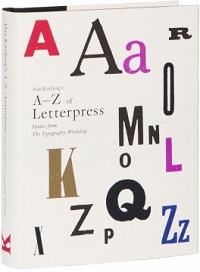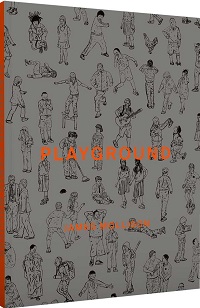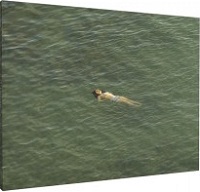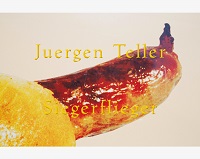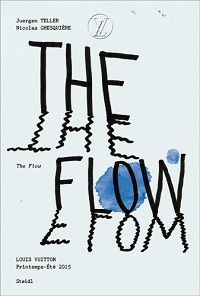Click on the image for more information, and to purchase
Graphic Design
A must for letterpress enthusiasts and graphic designers, this is a covetable showcase of Alan Kitching’s fount collection. Each page has been carefully created by Alan Kitching in collaboration with Angus Hyland, making this book a work of typographic art in its own right. Presented as an A to Z, the individual letters are divided by full alphabets, giving the reader access to a large range of founts to reference in their own work.
Photography
Roland Fischer’s Façades are spectacular photographic pictures: a visual grammar of architectural structures, an alphabet of abstract forms full of art-historical references. Roland Fischer (b. 1958), whose work is exhibited worldwide in important museums, lives and works in Munich and Beijing. Since the 1990s the artist has been photographing the exteriors of buildings, of banks, corporate headquarters and museums in the metropolises of the world, including Beijing, Tokyo, Shanghai, New York, Hong Kong, Melbourne, Osaka, Boston, Brasilia, Los Angeles, Paris, São Paulo, Singapore, Dallas, Madrid, Washington, Mexico City, Chicago, Toronto, Chongqing and Montreal. The results of this breathtaking project form an unusual series of some 100 façades: a vocabulary of global architecture, an inventory of city landmarks. The structures and colours of the contemporary metropolitan universe are transformed into pictures that resemble abstract paintings.
James Mollison’s photo projects are defined by smart, original concepts applied to serious social and environmental themes. For his latest book, Playground, Mollison photographs children at play in their school playgrounds, inspired by memories of his own childhood and interested in how we all learn to negotiate relationships and our place in the world through play. For each picture, Mollison sets up his camera during school break time, making multiple frames and then composing each final photograph from several scenes, in which he finds revealing “play” narratives. With photographs from rich and poor schools, in countries including Argentina, Bhutan, Bolivia, India, Israel, Italy, Japan, Kenya, Nepal, Norway, Sierra Leone, the United Kingdom, and the U.S., Mollison also provides access for readers of all ages to issues of global diversity and inequality.
Since the publication of Richard Misrach’s best-selling and critically acclaimed publication On the Beach, he has continued to photograph at the same location, building a body of work that has been exhibited as On the Beach 2.0—a reference to the technological and optical developments that have made the intensely detailed, exquisitely rendered depictions possible. The Mysterious Opacity of Other Beings focuses less on the abstraction of water, sand, and mote-sized figures, instead honing in on the gestures and expressions of bathers adrift in the ocean, at play or in poses ranging from relaxation to transcendence.
For a German football enthusiast like Juergen Teller, summer 2014 couldn’t have been any better. The German national team—not guest of honor in Teller’s work since Nackig auf dem Fussballplatz (Steidl, 2004)—won the World Cup in Brazil, and Teller was there every step of the way. Siegerflieger (literally “the victors’ plane,” the affectionate name given to the German team’s customized jumbo) unfolds in typical diary-like Teller fashion: we see him enjoying a bratwurst or two, a casual round of chess with the family in his hometown of Bubenreuth, and perhaps one drink too many with his students from the Academy of Fine Arts in Nuremberg. Yet Teller’s obsession for football (also shared by his son Ed, the covert star of this book) remains center stage, be he watching the final live on TV or welcoming home the triumphant team at the Brandenburg Gate. Teller even went so far as to immortalize the German victory in his very first tattoo, a natural step for football fanatics. For the rest of us, we have the exuberant, testosterone-charged Siegerflieger to enjoy.
In the last decade there has been a major reappraisal of the role and status of the photobook within the history of photography. Newly revised histories of photography as recorded via the photo- book have added enormously to our understanding of the medium’s culture, particularly in places that are often marginalized, such as Latin America and Africa. However, until now, only a handful of Chinese books have made it onto historians’ short lists. Yet China has a fascinating history of photobook publishing, and The Chinese Photobook will reveal for the first time the richness and diversity of this heritage. This deluxe, lavishly produced volume is based on a col- lection compiled by Martin Parr and Beijing- and London-based Dutch photographer team WassinkLundgren. And while the collection was inspired initially by Parr’s interest in pro- paganda books and in finding key works of socialist realist photography from the early days of the Communist Party and the Cultural Revolution era, the selection of books includes key volumes published as early as 1900, as well as contemporary volumes by emerging Chinese photographers.
Mickalene Thomas is best known for her large-scale, multi-textured and rhinestone-bedecked paintings of domestic interiors and portraits. However, the Brooklyn-based artist has also identified the photographic image as an important touchstone for her work, both as source material and as a medium for creating work. In an interview in the catalog for her solo show at the Brooklyn Museum last year, Thomas described photography as something that “defines [her] practice. It provides a connection between all the works.” As a student at Yale, she took classes with photographer David Hilliard, who encouraged her to photograph herself and her mother—an experience that Thomas sees as an important pivot point for her as an artist.
Fashion
Following the success of I Just Arrived in Paris THE FLOW is the second book in the continuing collaboration between Juergen Teller and Nicolas Ghesquière, artistic director of Louis Vuitton. On 1 October 2014 Teller photographed Ghesquière’s Spring-Summer 2015 collection for the house, and the resulting book is a fluid mix of fashion photos in Teller’s inimitable guileless style and images of Paris shot while boating down the Seine. This combination of portraiture, still-life and landscape photography mirrors the eclectic influences and materials which Ghesquière synthesizes in his collections—a bold, unconventional flow whereby innovation unceasingly rejuvenates tradition.
_______________

